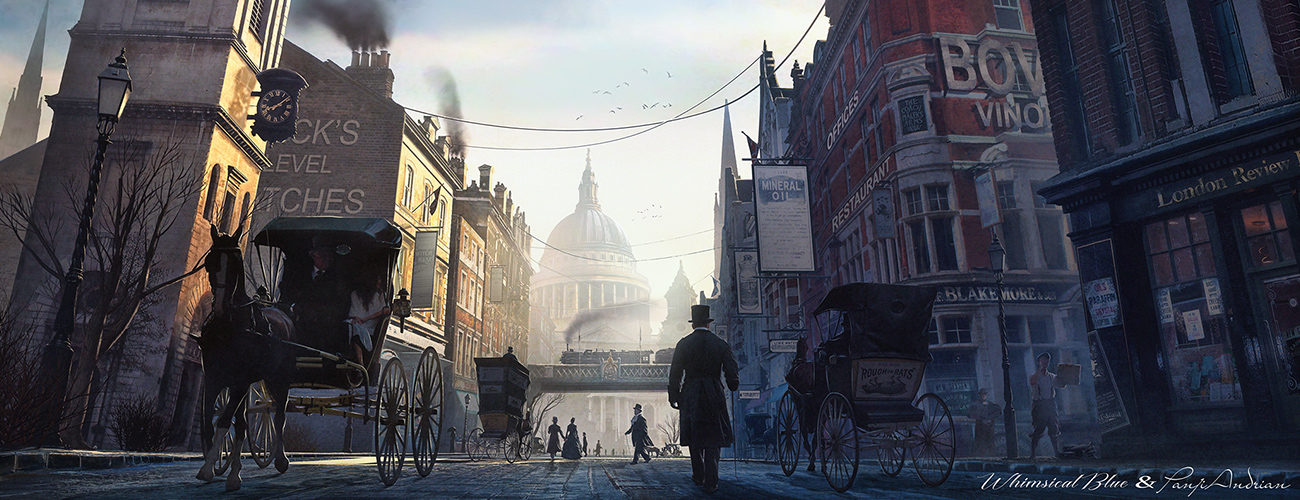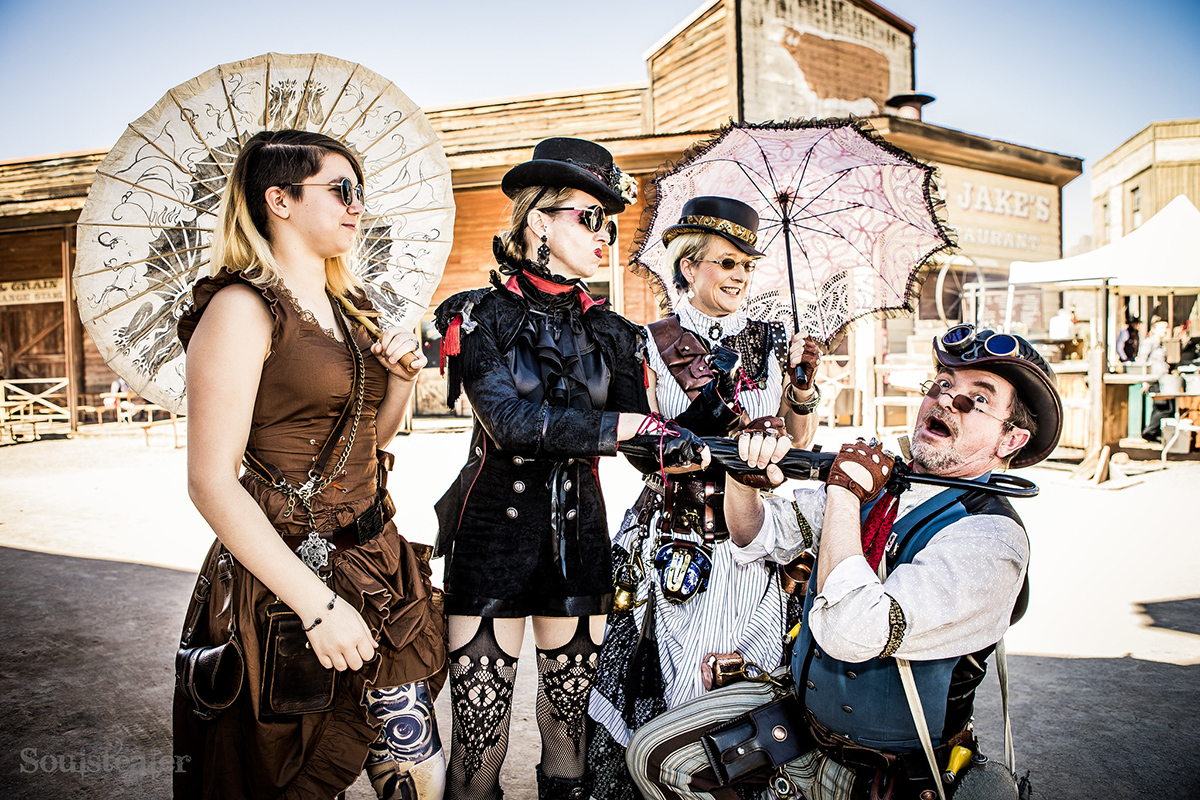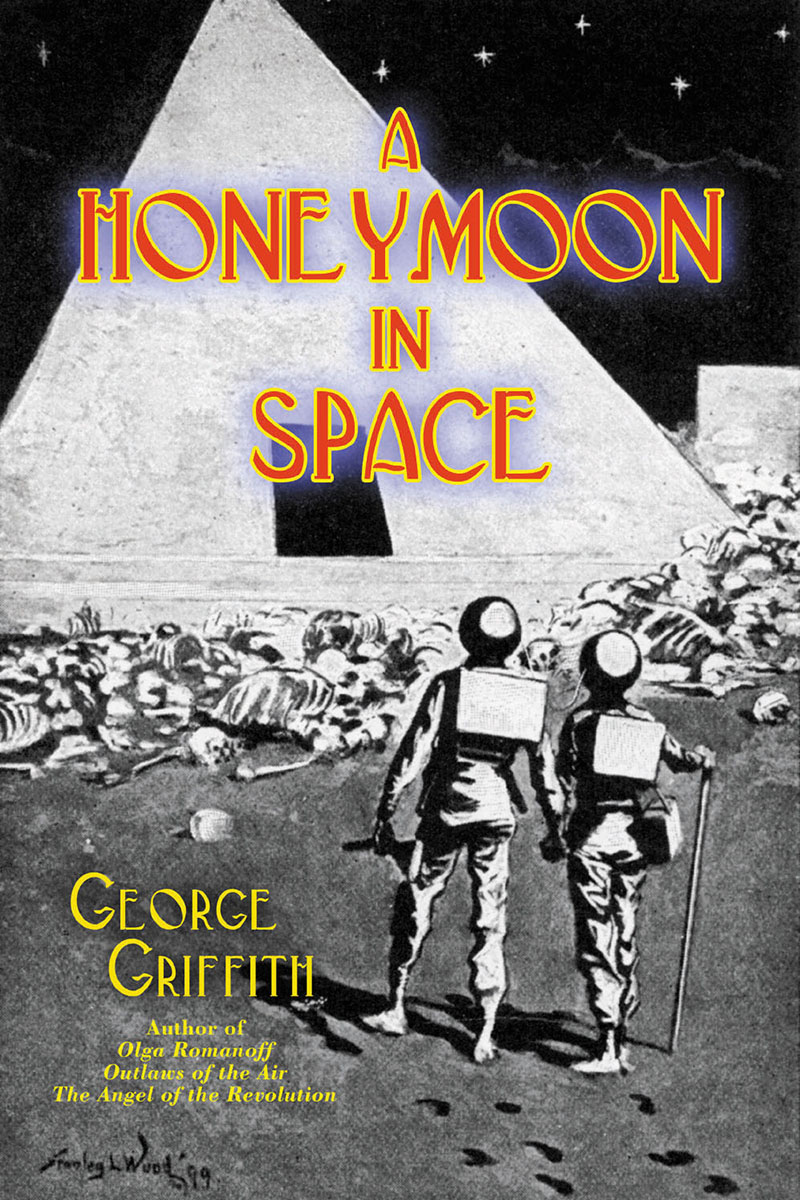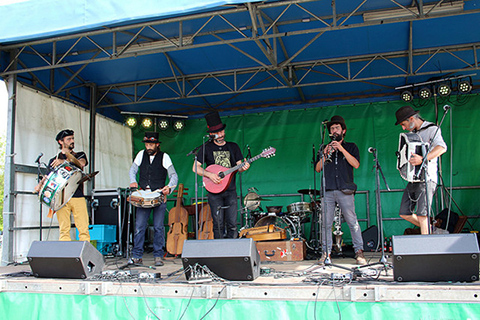It’s been a long time since I left the steampunk scene and an even longer time since I should have. Yet as someone who writes a blog on historical film and literature should know, the past is inescapable. Hardly a month goes by when I’m not alerted by aggregators of academic journals — which I use for my offline life as a history and science educator — that my name has popped up in a paper about steampunk. Invariably these papers are referencing a piece I did over a decade ago in SteamPunk Magazine titled “Varieties of Steampunk Experience”.
Unfortunately, every single academic paper I have seen reference my piece has misinterpreted it, and misinterpreted it in almost exactly the same way.

Correcting the record
My antipathy toward steampunk has largely allowed me to laugh off more than a decade of inaccurate research as a satisfying private joke. Splintered right into the heart of a majority of steampunk academia is a mistake; a mistake that could have easily been corrected had any one of these academics bothered to talk to me about what exactly I meant when I defined two types of steampunk experience, the Nostalgic Steampunk and the Melancholic Steampunk.
Eventually the jig must come up, and I suppose I do hold a responsibility to correct the record.
A good example of the consistent misinterpretation can be found in Speculative Imperialisms: Monstrosity and Masquerade in Postracial Times (2017) by Susana Loza, an associate professor of critical race, gender and media studies at Hampshire College. I single this text out not because it is particularly egregious or out of any disrespect to Loza specifically, just as a fairly recent and instructive example of the error.
In her second chapter, “Colonial Cosplay: Steampunk and the After-Life of Empire,” Loza writes:
Bruce Sterling, who co-authored the seminal steampunk novel The Difference Engine with William Gibson, once opined that steampunk is “funereal theater,” a peculiar pageant that pumps life into parts of the Victorian past that “excite us, such as the dandified gear of aristocrats, peculiar brass gadgets,” but represses the “aspects of the past that are dark, gloomy, ugly, foul, shameful and catastrophic.” But, as Sterling reminds us, “When you raise the dead, they bring their baggage.” In “Varieties of Steampunk Experience,” Cory Gross develops a schematic that elucidates the complex relationship of steampunk to history, memory, and the past. He proposes the existence of two distinct kinds of steampunk: Nostalgic Steampunk and Melancholic Steampunk. Nostalgic Steampunk is “less concerned with recreating the past than an idea of the past, a nostalgic romanticism of what the Victorian era represents, rather than how it actually was.” It revels, “much like Victoriana itself, in the elegance and the spectacle of the Empire. It forgets, or chooses not to remember, the dirtiness and the imperialism of this same Empire.” This is the version of steampunk favored by the pith hat defenders, the Vict-Orientalists and the aristocratic dandies invoked by Sterling. Melancholic Steampunk takes a different approach to memory. While Nostalgic Steampunk problematically privileges the colonial subject in its romantic reconstructions, Melancholic Steampunk centers on the painful remembrances of postcolonial subjects seeking to remember pasts that never existed but must be recovered nevertheless.
In “Steampunk 101,” G. D. Falksen famously defined steampunk as Victorian science fiction and emphasized that “Victorian” is “not meant to indicate a specific culture, but rather references a time period and an aesthetic: the industrialized nineteenth century.” While Nostalgic Steampunks refuse to contemplate a retro-futurist past in which Victorian England and its empire is not at the center, Melancholic Steampunks have embraced the anti-imperialist potential of rewriting the Victorian past. TheVixenne, a commenter at SteamPunk Magazine, reminds us:
Steampunk is not about “history” as we know it to be. It’s about history as we can imagine it, or perhaps what it should have been. The issue is that steampunk has been operating under a Eurocentric default because that’s what most writers seem to know. But with people of color as well as those who understand that fantasy and sci-fi are about making the impossible possible and reimagining other worlds, that default no longer has a place. In other words, one does not have to accept England as superpower to write or create steampunk. One can imagine a world where Africa and/or Asia are the dominant powers or something different. And that’s the essence — to see differently.
In other words, “Steampunk has the power to rip open the nineteenth century’s belly and examine its clockwork guts — and to rearrange those guts in new ways.” Melancholic Steampunk challenges totalizing narratives of historical progress, it redefines cultural spaces and identities. Melancholic Steampunks are not interested in simply returning to the Victorian past. They want to twist time to suit their needs.
Loza then goes on to outline several works of alternate history that rewrite the nineteenth century in favor of various non-European cultures.
So what does Loza, and virtually every other academic quoting me, get wrong?
Overlooked Romanticism
The error is in equating the concept of Melancholic Steampunk with progressivism, post-colonialism, decolonization, anti-imperialism, identity politics and the punk ethos. On the contrary, that laundry list of leftist ideologies are themselves expressions of Nostalgic Steampunk.
The crux is the most overlooked subtext of my piece, which is also its most important: the question of Romanticism.
A prosaic definition of Romanticism comes from Merriam-Webster:
A literary, artistic and philosophical movement originating in the eighteenth century, characterized chiefly by a reaction against neoclassicism and an emphasis on the imagination and emotions, and marked especially in English literature by sensibility and the use of autobiographical material, an exaltation of the primitive and the common man, an appreciation of external nature, an interest in the remote, a predilection for melancholy and the use in poetry of older verse forms.
Romanticism by its very nature selects diacritical traits for formulation into a cultural and political meta-narrative that supports its worldview. This is especially evident in its critiques of modernity and invention of folk nationalism.
Romanticism developed a nostalgic medievalism as a lens through which to critique perceived cultural losses to industrial modernity in the eighteenth and nineteenth centuries. Rediscovering the Middle Ages as a vehicle for criticizing modernity was only permissible through their distance from the immediacy of its lived experience. The Enlightenment created the myth of the “Dark Ages” through an overemphasis on the negative realities of the Middle Ages, thus acting to promote Enlightenment modernity. For Romanticism, the pendulum swung in the opposite direction. It overemphasized the positive realities of the Middle Ages in order to critique industrial modernity. Yet both were nostalgic exercises in the sense of the term I used in “Varieties of Steampunk Experience”.
While overemphasizing the negative realities of the Middle Ages, the Enlightenment also predicated itself on a nostalgia for the classical period and a nostalgia for the oppressed persons of the Middle Ages. We still see the lingering echo of this in such programs as Cosmos (1980, 2014) making “martyrs for science” out of Hypatia and Giordano Bruno, despite their being pseudoscientific cranks even by medieval standards. The damage to our understanding of the Middle Ages wrought by scholars of the seventeenth through nineteenth centuries is still being sorted out by academics today. Meanwhile, Romanticism critiqued the dark age of the Enlightenment by predicating itself on a nostalgia for the medieval and the common folk.
Certain diacritical traits of communities sharing common languages, cultures, religions and stories were selected as essential to a folk identity and used as the basis for the creation of the modern nation-state. Whereas people may have previously identified with a city, principality, family or clan, Romantic nationalism had them begin to identity with people. Nationalist meta-narratives were created from this process, often given the sheen of antiquity through the creation of a common folk mythology from scraps of legendary material. Richard Wagner’s Der Ring des Nibelungen is a prominent example employed during the creation of the German Empire in the 1870s and the Third Reich in the 1930s. The folk as an identity collective were, like the Middle Ages, a Romantic vehicle for critiquing and coping with modernity’s breaking down of traditional loci of meaning. Nostalgia can be used as a tool to both bolster an existing order and to critique it.
Parallels
Progressive, post-colonial, de-colonial, anti-imperialist, punk and identity politics have parallels to those of eighteenth- and nineteenth-century Romantics. They necessarily involve the invention of a “social justice” meta-narrative through the selection of diacritical traits that organize and assign moral value to identity collectives. The concept of the folk has been updated as the concept of the identity-based “community,” speaking of LGBTQ persons, people of color, people without color, men, women, etc., as though they form coherent, monolithic blocks of political interest. Rather than a rational, objective, value-neutral analysis of eighteenth- and nineteenth-century societies, they act to “criticize” through the assigning of good identities (women, queer, trans, people of color) and evil identities (men, straight, cis, white). Certain moral values are assigned to good identities, such as the nobility of victimhood and the utopia of indigeneity. The virtue of the oppressed and the virtue of the non-European have replaced the virtue of the folk and the virtue of the medieval as the modern Romantic myths through which to critique modernity.
Most misinterpretations of “Varieties of Steampunk Experience” come from academics whose credentials are in “critical race, gender and media studies” and such subjects. That is, the active agents in creating and perpetuating the myth of the virtuous oppressed non-European. So it isn’t unexpected that they would want to associate their activity with the edgy and unflinching honesty of Melancholic Steampunk, assigning Nostalgic Steampunk to the “evil” identities. Superficially, it would seem like Melancholic Steampunk is on the side of the oppressed and the non-European, punching up at the oppressor European.
They think Melancholic Steampunk is good and refers to their virtuous selves, and Nostalgic Steampunk is bad and refers to the vilified other.
This is their mistake.
Nobody’s side
Melancholic Steampunk isn’t on anybody’s side. Whereas Nostalgic Steampunk is both good and bad, Melancholic Steampunk is neither good nor bad. Melancholic Steampunk is the de-Romanticized vision of alternate history, the cold, rational, analytical gaze from which none are exempt.
An excellent example of the distinction is first-wave feminism and the novel Herland (1915) by Charlotte Perkins Gilman. A pseudo-melancholic review of Herland would uncritically accept the virtue of the oppressed feminine and exult in the reversal of fortunes that creates a completely female society devoid of men. Likewise, it unquestioningly beatifies the first wave feminists as heroic figures battling against the evil patriarchy, mainly to bolster the reputation of modern third- and fourth-wave feminism. If it offers any critique, it is only to exult the nobility of even more oppressed classes, such as the LGBTQ and women of color.
Nevertheless, this is a nostalgic view of women and first-wave feminism. In my review of Herland, I deliberately affected a melancholic critique, highlighting that Gilman’s society is patronizing, paternalistic and eugenicist, reflecting those same trends in first-wave feminism. A truly melancholic appraisal would be able to recognize that women were unfairly restricted by a patriarchal society and that first-wave feminism was tied to repugnant authoritarian ideologies, without making excuses for either. Both were true. Sanitizing and romanticizing one or the other is an exercise in Nostalgic Steampunk.
In my original article, I drew the distinction between Nostalgic and Melancholic Steampunk through the examples of Jules Verne and H.G. Wells. Verne, my favorite author, stood as the example of the nostalgic writer: a Romantic who saw in science and technology the vehicle for the transcendental appreciation of nature. Wells was the melancholic exemplar. His cynical perspective stood on nobody’s side. War of the Worlds was neither pro-British nor pro-Martian. The Time Machine was neither pro-Eloi nor pro-Morlock, and depicted the working underclass as literal flesh-eating monsters preying on the infantile overclass. The Island of Doctor Moreau was neither on the side of Moreau nor on the side of his creations, instead charting the unrelenting horror of the island in a ham-fisted allegory for the human condition. Nobody in a Wells novel is good. Indeed, the concept of goodness had as little a place in Wells’ stories as it had in Wells’ personality. The best a character in one of his stories can hope for is to be tragic.
Totalizing narrative
The moment you begin to romanticize one side or the other, you trespass from Melancholic Steampunk into Nostalgic Steampunk. An idealized, utopian, nostalgic Romanticism for the Victorian era’s colonized and oppressed underclasses is nonetheless an idealized, utopian, nostalgic Romanticism.
So when Loza writes that while, “Nostalgic Steampunk problematically privileges the colonial subject in its romantic reconstructions, Melancholic Steampunk centers on the painful remembrances of postcolonial subjects seeking to remember pasts that never existed but must be recovered nevertheless,” she is completely and utterly wrong. That is absolutely not what I meant.
Romanticizing “postcolonial subjects seeking to remember pasts that never existed” is also Nostalgic Steampunk. If an “anti-imperialist potential of rewriting the Victorian past” didn’t elucidate how horrific and genocidal a nineteenth-century African, Asian or Middle Eastern steampunk society would have been in its own unique and inventive ways, separate from the genocidal horrors of a European steampunk society, it is not Melancholic Steampunk. Far from “challeng[ing] totalizing narratives of historical progress,” Pseudo-Melancholic Steampunk is simply creating an alternative totalizing narrative of historic progress defined by the rising up of the oppressed non-European.
Undoubtedly the rejection of this good oppressed non-European/evil oppressor European dialectic will be tiresomely considered as racist as the embrace of pro-imperial nostalgia, because the leftist narrative is so totalizing that it cannot countenance how any moral person could disagree with it.
The fact remains that there are very few examples of truly Melancholic Steampunk, and virtually no fans of it. Hence my mention in my original article that devotees of cyberpunk fiction consider steampunk a short-lived and dead genre. Whatever it was that started gaining mainstream punk popularity around 2007 is a romanticized counterfeit. David Langford and Peter Nicholls, in The Encyclopedia of Science Fiction, chided Gibson and Sterling’s The Difference Engine (1990) for making the Victorian era “even more dystopian than Dickens.” Melancholic Steampunk is relentlessly un-Romantic and consequently difficult to translate into a fashionable couture.
And couture is what started all this to begin with. Loza’s thesis was that wearing a pith helmet is offensive, and being offended is basically the same as being oppressed. Yet, as I write this, pro-democracy protesters in Hong Kong flaunt the symbols of Western colonialism — the flags of the United Kingdom and the United States — in their opposition to actual authoritarian oppression by China’s monstrous communist regime. Totalizing meta-narratives of the virtuous oppressed non-European and evil oppressor European are as fantastical and fictional a construct as a steam-powered flying machine.
Art on this page by Panji Andrian.





1 Comment
Add YoursMany thanks for this interesting article. My only real caveat came when I then read your Steampunk Magazine article and reckoned you are not so much explicating it in this new piece as reinterpreting it. If the inferences drawn from your first piece by various commenters are as mistaken as you now say, I must admit I would probably have made the same mistakes.
I agree with your critique of modern day pieties, particularly in your last paragraph, but see it as an addition to your earlier article rather than a clarification of it.
Meanwhile, may I dare stir the pot a little more by comparing Nostalgic versus Melancholic Steampunk to Ottensian versus Piecraftian Dieselpunk?